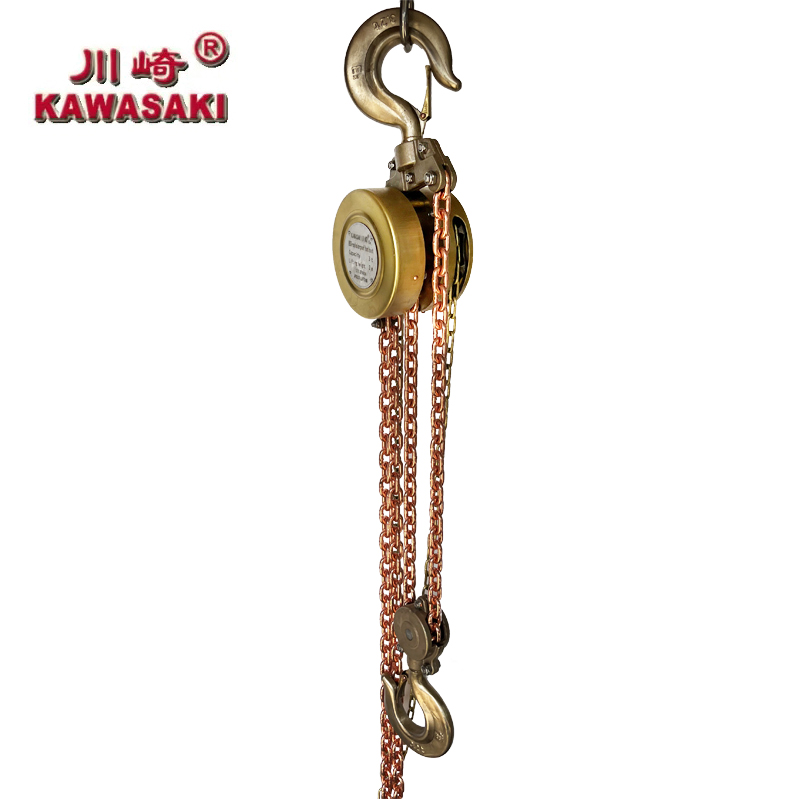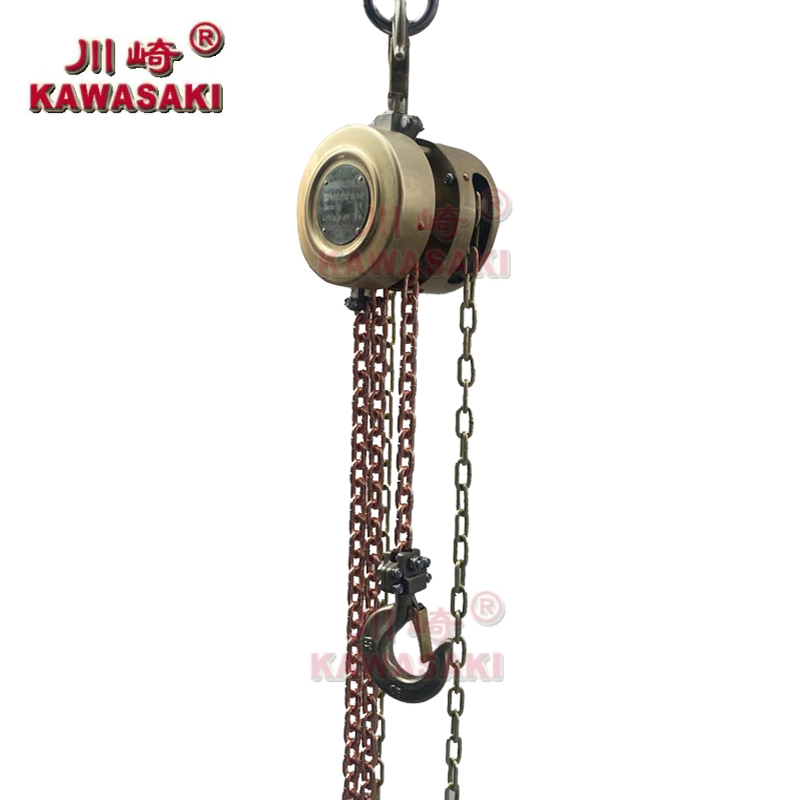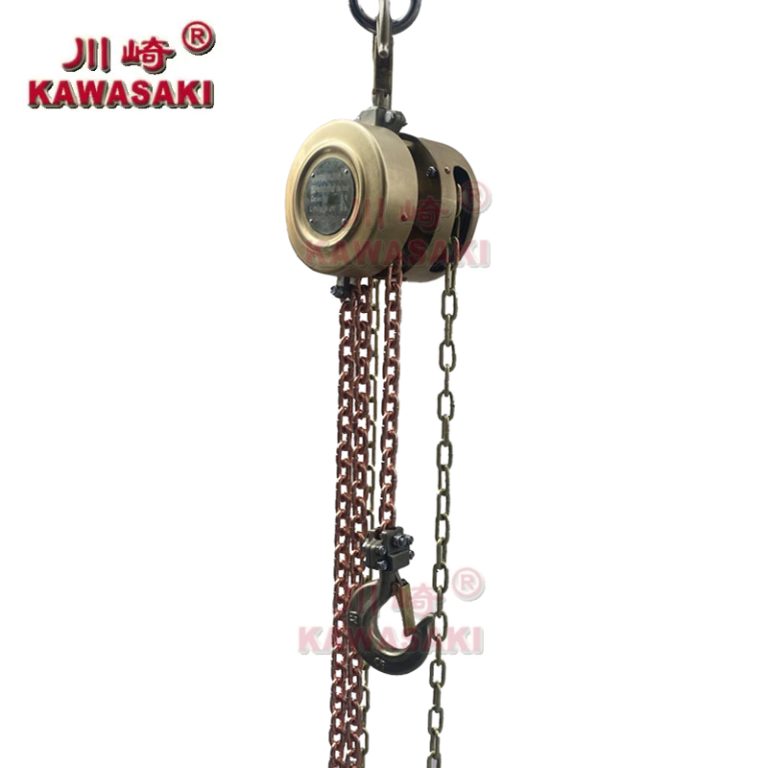Proper chain hoist maintenance is essential for safety and the life of the equipment. Everybody can have the ability to detect wear and tear during conducting regular inspections, especially chain, hooks, and load blocks. Regularly lubricating moving parts can eliminate friction and rust.
Key Components of Chain Hoists and Their Maintenance Needs
How Should You Inspect and Care for Chains?
As with any chain hoist, this is the most fundamental part as it will hold the load and allow for easy movement. This is why we need to inspect those regularly. Begin inspecting the chain links for any sort of wear, deformation, or corrosion. Chains similar to those found within manual chain hoists are often manufactured from high-grade materials like T80 or T100 steel, providing maximum strength and durability.
What is the Best Way to Maintain Hooks and Latches?
Hooks and latches play an important role in holding a load securely. Look for any cracks, deformation or wear that could affect safety. Some models have special hooks with thickened designs with wear-resistant processing. Latches should snap back into place freely; if they don’t, replace them. Regular cleaning of these components will prevent the accumulation of dirt, which can affect the functioning of the air filter and throttle body.
How Do You Maintain the Gear Mechanism?
The gear mechanism is the core of the chain hoist, controlling the lifting and lowering movements. Open the housing from time to time to check if the gears are worn or damaged. Alloy steel with heat treatment is used to produce gears with long service life. Use special industrial gear grease to reduce wear.
Routine Maintenance Practices to Enhance Performance
What Should Be on Your Daily Inspection Checklist for Chain Hoists?
By having a daily inspection routine, you will be able to keep your chain hoist in the best possible order. Start above with any visible parts, chains, hooks, latches, and housing and check for signs of damage or excessive wear. Perform a load holding test on the brake system. Make controls behave correctly and responsively.
How Often Should You Conduct Periodic Maintenance Intervals?
Maintenance is performed periodically at intervals depending on the intensity of use, but generally about once per three months, and after certain heavy-use cycles. In between these intervals, look more closely at internal parts such as gears and brakes. Eliminate operational risks by replacing worn-out parts on demand as soon as they are discovered with high-quality replacements.
Recommended Tools and Techniques for Effective Maintenance
What Specialized Tools Are Needed for Chain Hoist Upkeep?
Using specialized tools allows you to perform maintenance tasks in a faster and more accurate way. For example, torque wrenches are used to confirm that bolts are secured to specifications posted by the manufacturer. Chain Gauge — It aids in determining how much the link has stretched due to wear. It is used for cleaning brushes, which clean the grime without damaging the surfaces.
Which Techniques Ensure Safety During Maintenance?
Maintenance work should be done safely during overhead crane use. Electric models must be unplugged before you begin working on them. Never operate the hoist while it is under service; use lockout/ragout to prevent activation. Use PPE (personal protection equipment) – gloves, safety glasses, etc; wear the appropriate PPE, including gloves and safety glasses.

For professionals seeking reliable solutions tailored to various lifting needs, Apollo’s range of products offers unmatched quality backed by rigorous testing standards.
Extending the Lifespan of Chain Hoists with Preventive Measures
Why is Load Testing Crucial After Repairs?
Load testing is an important step in making sure chain hoists can operate safely after a repair. It ensures that the hoist can safely lift its rated load capacity without failing This process helps to detect issues like misaligned parts or reduced structural integrity. Regular load testing not only makes sure of safety standards but also analyzes accidental uncertainties during operations. This is not optional for the professionals who use chain hoists in harsh environments.
How Do Environmental Factors Affect Storage and Usage?
Now lot of environmental conditions matter for the life of Chain hoists. Corrosion and mechanical wear occur with exposure to moisture, dust, or extreme temperatures. Dry, climate-controlled storage areas help mitigate these risks. Additional protective measures (covers or coatings) should be used when the object is outdoors or used in a harsh environment. For example, a chain that has been treated with an anti-corrosion finish, such as galvanized or nickel-plated coating, is likely more resistant to challenging element conditions.
Why Should Operators Be Trained on Correct Usage Practices?
Handling chain hoists requires operator training. Improper use can harm equipment, which is dangerous as well. Load limits, proper attachment methods, and emergency procedures should be included within training programs. If trained properly, a machine operator will be able to spot early indications of wear and tear and take preemptive measures, which in the long run can help prolong the life of the machinery.
APOLLO Chain Hoists: Reliable Products with Easy Maintenance Features
What Makes APOLLO Chain Hoists Durable?
APOLLO chain hoists are made with high-quality materials, and their advanced manufacturing processes ensure their durability. It also uses items such as alloy steel gears and T80/T100 grade chains, which are meant for heavy-duty applications. In addition, the surface treatments (e.g., oxidation, electroplating) also help in their resistance to wear and corrosion. Moreover, their surface treatments, like oxidation or electroplating, improve the resistance to corrosion and wear.
How Do APOLLO Products Simplify Maintenance?
APOLLO chain hoists are equipped with serviceability features to ensure minimum outages. With a modular design to disassemble and replace its parts, the components are designed for durability, including thickened and wear-resistant hooks that minimize replacements. Moreover, their gearboxes are sealed to prevent foreign matter from entering critical mechanisms, allowing seamless operation over time.
Which APOLLO Models Are Best Suited for Heavy-Duty Applications?
For the heaviest duty applications requiring the highest degree of reliability, they include the manual chain hoist CK. These hoists are industrial-grade construction and are capable of tailored, optional load-limiting functions, and anti-corrosion coatings. Functional and consistent for both industrial production and agricultural use, these models are engineered for tough conditions.
If you are looking for electric solutions, APOLLO also has electric chain hoists with advanced features, explosion-proof designs automated controls. These models are designed for high-capacity lifting, but include overload protection systems to protect the operator. The models are designed for high-capacity lifting while protecting the operator with built-in overload protection systems.
FAQs
Q1: How frequently is the load testing needed for my chain hoist?
A: Load testing shouldn’t be performed before any major repair and at periodic intervals as defined by the manufacturer to ensure safe use.
Q2: Can environmental factors void my warranty?
A: Yes, improper storage or usage in unsuitable environments without protective measures may void your warranty. Always follow the manufacturer’s guidelines.
Q3: Is there availability of parts in the spare parts?
A: Yes, APOLLO offers numerous spares with video guidance regarding the installation for a hassle-free maintenance process.


